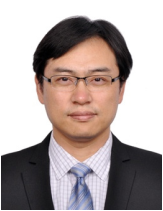Material Design and Computational Study of Dirac semimetals
Weng Hongming
Institute of Physics, Chinese Academy of Sciences
EXTENDED ABSTRACT: Dirac semimetal is one of the member in topological semimetal family. An ideal Dirac semimetal has, and only has four-fold degnerate nodal point(s) consisting of the Fermi surface. This has resulted in various nontrivial topological properties, such as zero mass of electrons, high mobility of carriers and chiral anomaly effects. Similar to Dirac nodes in two-dimensional graphene, its realization in threedimensional solids is highly expected for these potenal applications. After nearly a decade effort, there are at least three different ways for realizing Dirac semimetals, namely the symmetry enforced essencial four-fould degeneracy, the accidental degneracy induced by band inversion and that caused by topological phase transition driven by external stimuli. In this talk, I will disucss these ways to Dirac semimetals based on material design and computational searching. Several typical materials have been theoretically proposed and experimentally confirmed. I will also discuss the conditions to get Dirac nodal line semimetal in addition to point nodal ones.

Professor of Institute of Physics, Chinese Academy of Sciences (IOP-CAS). He obtained Ph. D. from Nanjing University in 2005. Then he worked as postdoc in Institute for Materials Research, Tohoku university and assistant professor in Japan Advanced Institute of Science and Technology. He joined IOP-CAS in 2010 and was supported by NSFC with the Distinguished Young Scientist Programme in 2019. He was awarded Nishina Asia Award in 2017 for “theoretical contributions in discovery of Weyl semimetals” and “Outstanding Science and Technology Achievement Prize of Chinese Academy of Sciences” in 2018 for his significant achievements in Research Group for Topological Semimetal Theory and Material Prediction. He was selected as Outstanding Referee by American Physical Society (APS) in 2021. He works in the field of computational condensed matter physics, including developing the method and program for first principles calculations and study of topological states and their materials. He has published more than 190 peer-reviewed papers and have been cited more than 19,000 times. Two papers on “Observation of Weyl fermions in solids” have been selected by APS to celebrate the 125’s anniversary of Physical Review Journals in 2018.